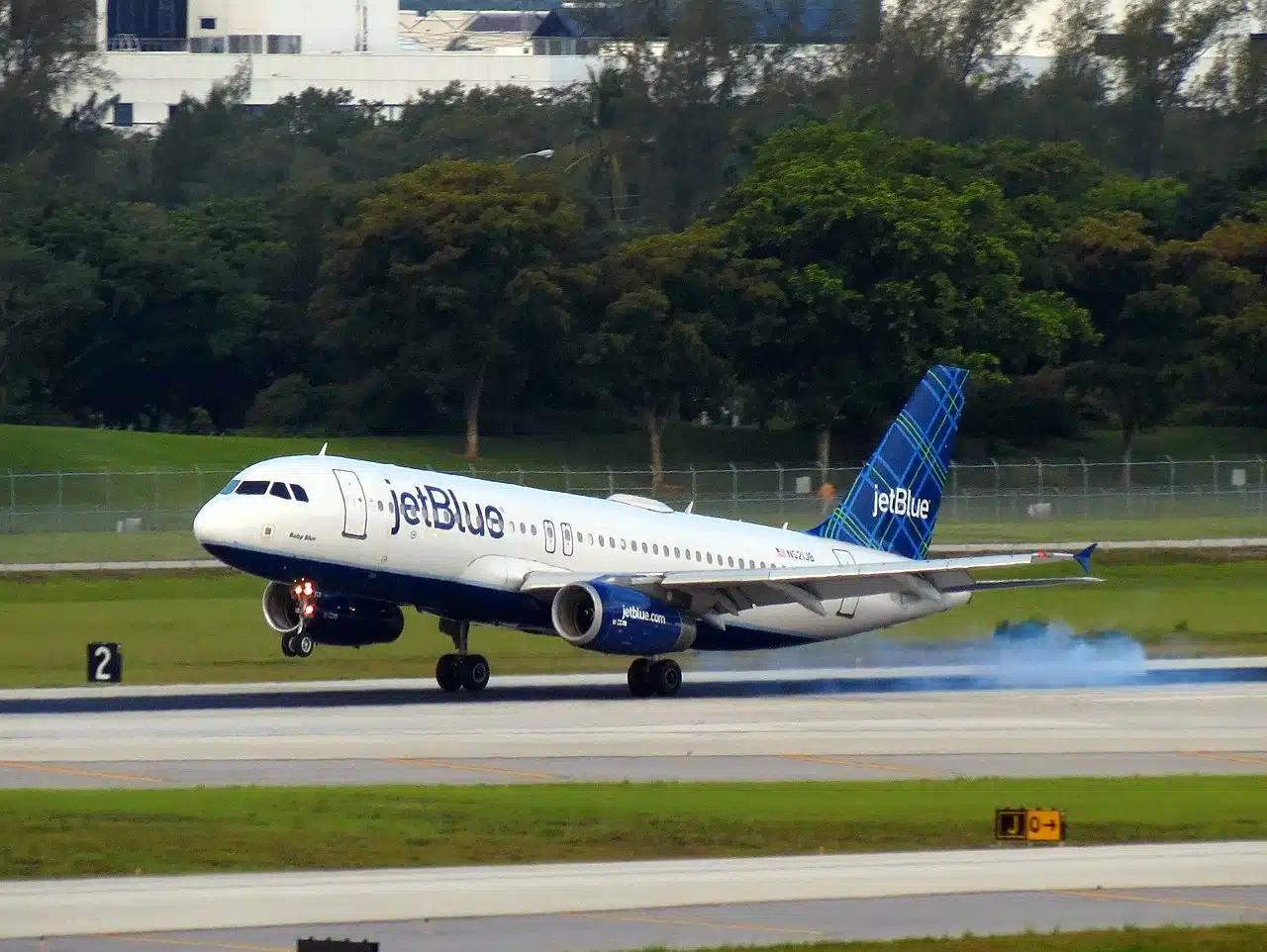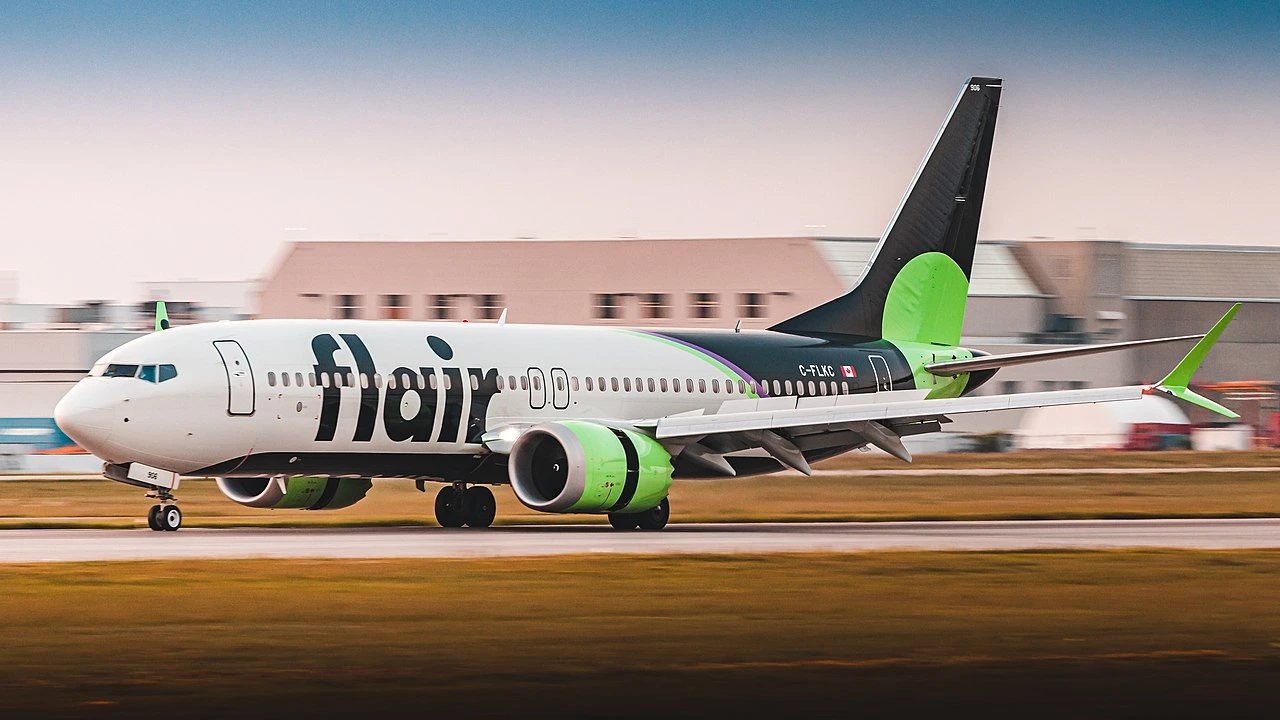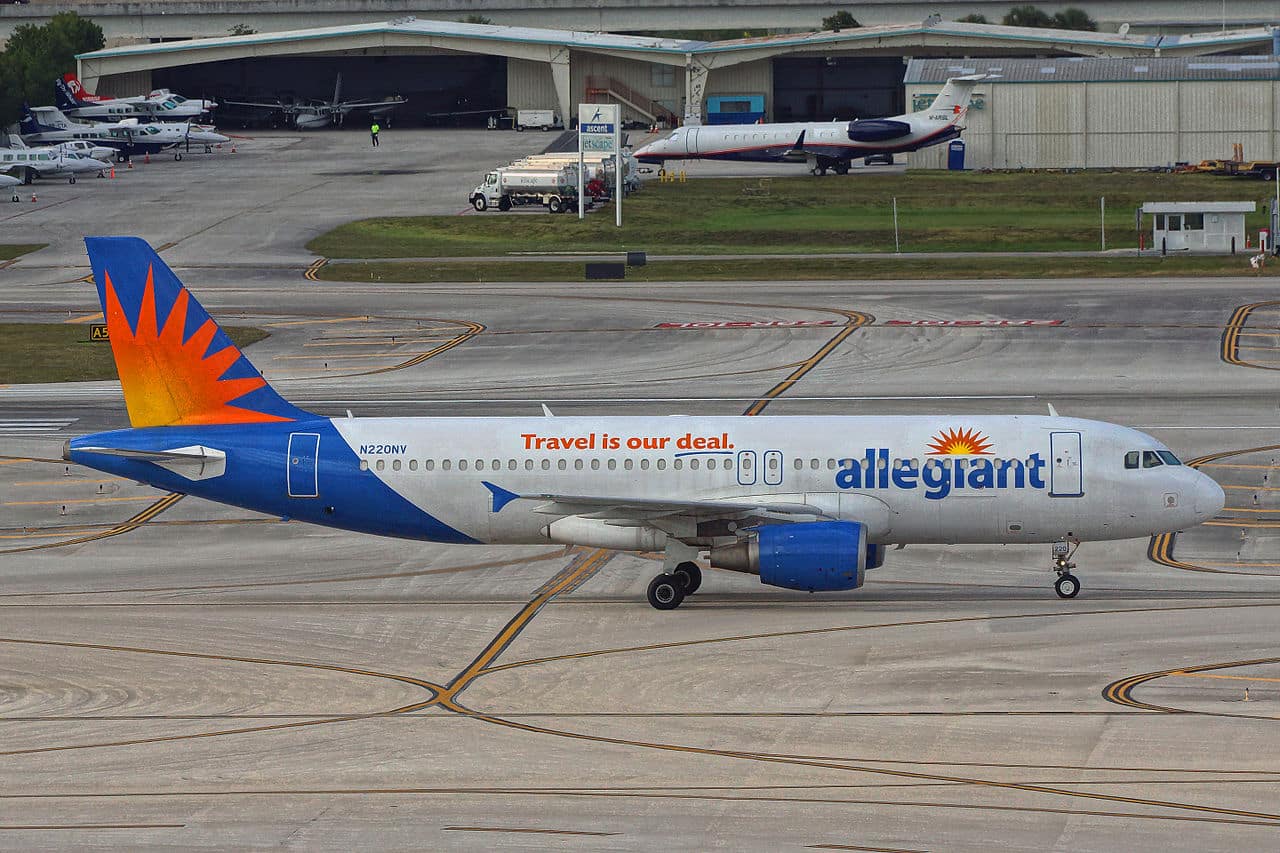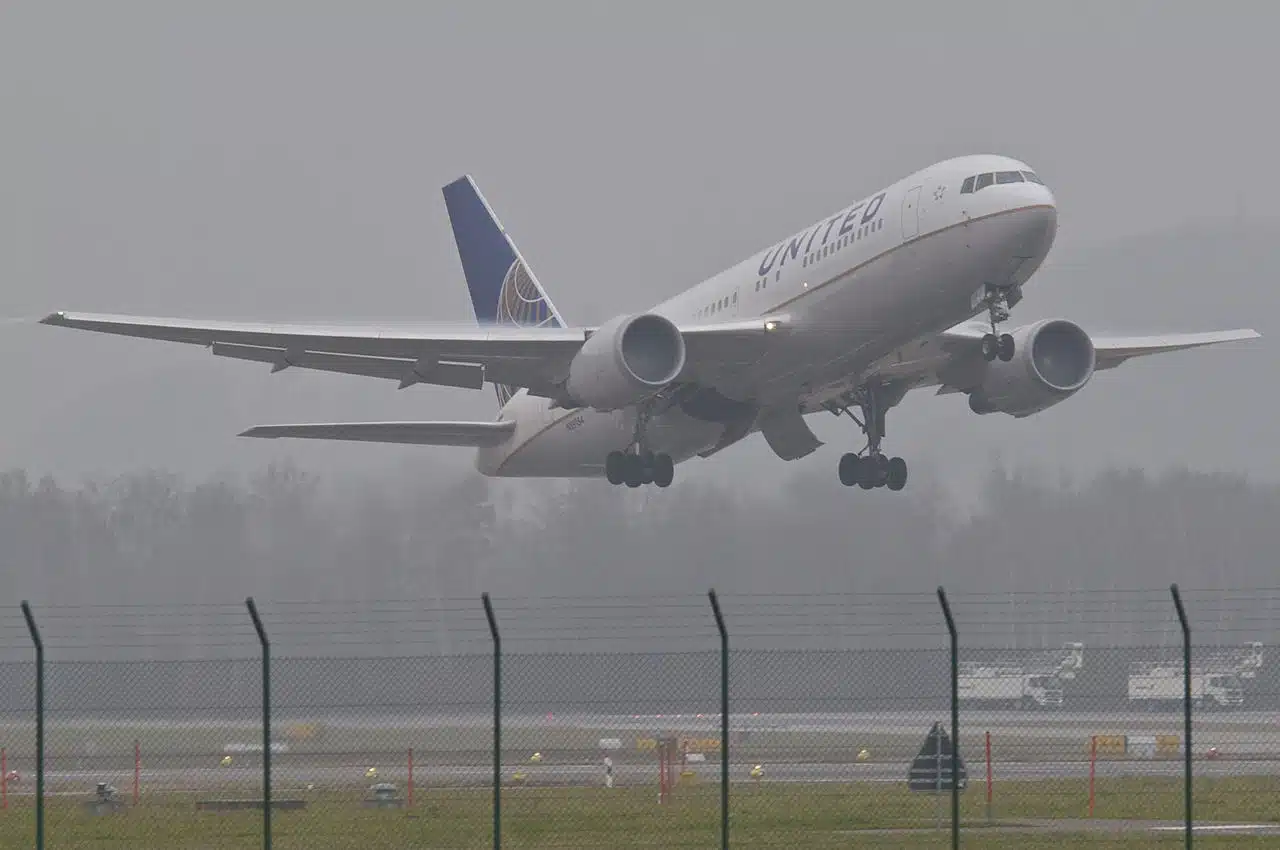


According our research, about 600 planes take off daily at JFK Airport through the first half of 2023. Find out more key statistics related to JFK Airport.
JFK Airport, also known as John F. Kennedy International Airport, is one of the busiest airports in the United States and serves as a major international gateway to New York City.
When it comes to the number of planes taking off, JFK Airport stands out among its counterparts.
With its extensive air traffic and global connectivity, it handles a significant volume of departures daily.
Its proximity to New York City along with being a crucial hub for several major carriers, contributes to a high volume of departures.
The airport accommodates a wide array of aircraft, including commercial airliners, cargo planes, and private jets.
Kennedy’s extensive runway system and state-of-the-art facilities enable efficient operations, allowing for a large number of departures to occur concurrently.
In this article, we will uncover some stats and facts about aircraft departures at Kennedy Airport.
In 2024, New York Kennedy Airport averages about 600 departures every day.
With planes departing just about every minute, there is no room for error.
One mistake like a pilot not taking off promptly enough, can force another plane already cleared to land on that same runway to go around and make another attempt for landing.
Air traffic control will then have to resequence the landing plane to get another landing attempt, which will start a backlog of planes trying to land.
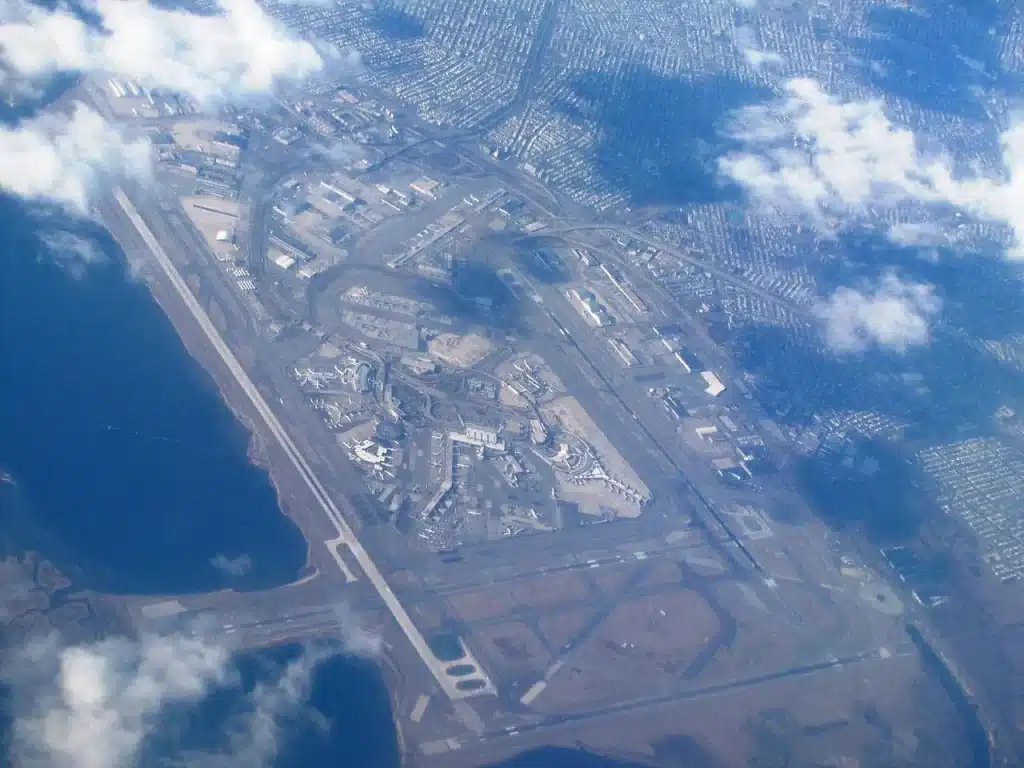
To accommodate planes taking off very frequently, JFK usually operates two parallel runways at a time.
They dedicate one runway for departures and the other for landings. Kennedy Airport has a total of 4 runways at its disposal for landings and takeoffs.
Two parallel runways face in the Northeast to Southwest direction and another set of parallel runways run in the Northwest to Southeast direction.
The choice of the active runway is dependent on the winds.
Planes need to take off and depart into the winds. For example at JFK, if the wind is coming from the Northwest, they will use the runway that allows planes to take off and land in the northwest.
Trying to coordinate these aircraft to arrive on the same runway for takeoff while bringing in planes for landing on these same runways is no easy feat.
Factors like delays at other airports and weather conditions present at JFK Airport often cause a backlog of aircraft to begin to pile up.
The worst days often occur during the winter months because aircraft can be delayed due to snowy and freezing conditions.
Even without active snow present, aircraft must navigate their way to de-icing stations to have their wings properly treated to avoid ice accumulating on them.
This de-icing process is another procedure that can delay planes for takeoff.
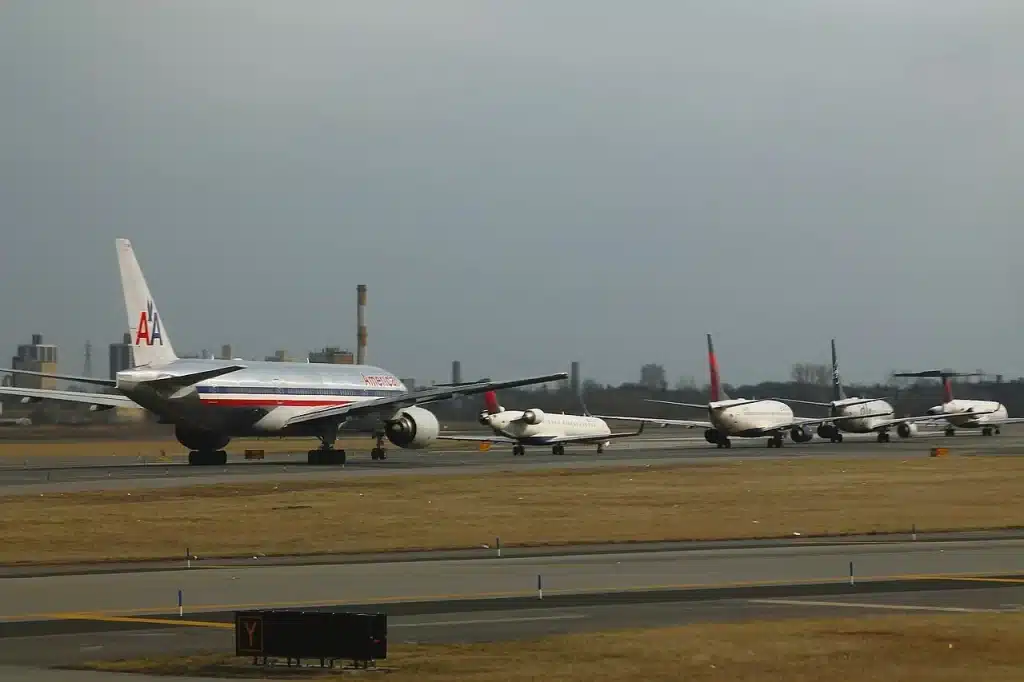
JFK Airport is usually rated within the top 5 airports yearly in airport delays.
Taxing times account for the bulk of the delays. The average taxi time at John F Kennedy Airport in 2022 was about 26 minutes.
It’s super critical for planes to depart on time because they can burn only so much fuel on the ground and still be able to reach their destinations.
Fuel is weight on airplanes. Airplanes can only carry so much weight to be able to take off so that’s why they carry just enough fuel to get to where they need to be.
If an airline calculates and loads the plane with the fuel needed for a 5-minute taxi but in reality the plane takes 45 mins to taxi, the plane will have to go back to the gate to get more fuel in order to continue its journey. This adds even more delays and possibly flight cancellations.
Typically, airlines have quick turnarounds at the gate. Planes land, taxi to the gate, get refueled, boarded, and then depart to their next destinations.
Planes usually don’t sit around at the gate long and often flow 3 to 5 times daily.
It’s not unusual for one particular aircraft from an airline to land and take off from JFK several times a day.
The airlines that utilize JFK Airport as a hub or focus are the ones that depart from the airport the most.
The following airlines own the highest passenger market share at JFK Airport in May 2024 according to the Bureau of Transportation.
One of the leading airlines in terms of departures at JFK is JetBlue Airways.
As a low-cost carrier based in the United States, JetBlue offers an extensive network of domestic and international flights from JFK Airport.
With its focus on providing affordable fares and excellent customer service, JetBlue has gained a significant presence at JFK and is known for its frequent departures to various destinations across the United States, Mexico, and Central America.
Another major player at JFK is Delta Air Lines, one of the largest airlines globally.
Delta operates quite a number of flights from JFK, both domestically and internationally.
With its hub at JFK, Delta provides an expansive route map and frequent departures contribute to its prominence at JFK Airport.
American Airlines is also a significant carrier at JFK, offering numerous departures to destinations throughout the United States and beyond.
As one of the largest airlines in the world, American Airlines operates multiple flights from JFK Airport, connecting travelers to various cities domestically and internationally.
The airline’s extensive network and frequent departures make it a popular choice for passengers flying out of JFK.
Air traffic controllers play a crucial role in ensuring the safe and efficient departure of planes from airports.
Here’s a simple explanation of how they ensure all planes take off without any issues:
By efficiently managing the departure process, air traffic controllers ensure that all planes take off smoothly, minimize the risk of incidents, and maintain the highest level of safety in the skies.
In conclusion, JFK Airport stands out among other airports in terms of the number of planes taking off. So far in 2024, the airport experiences about 600 takeoffs per day and is on track to eclipse its 2022 total for aircraft movements, estimated to achieve 474,500 this year.
Its prime location, extensive runway infrastructure, and international connectivity contribute to its bustling departure operations.
Whether it’s connecting travelers to global destinations or accommodating a diverse range of aircraft, JFK Airport remains a key player in the aviation industry, known for its high volume of departures.


